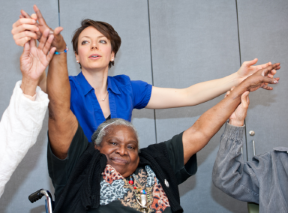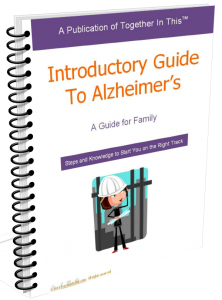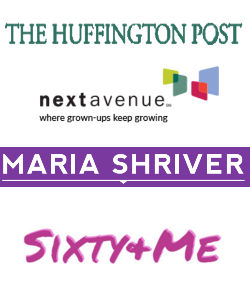Contributing Writer: Natasha Goldstein-Levitas, Dance/Movement Therapist
Movement is Universal
In life and throughout the dementia caregiving relationship, we move together and we move apart in various rhythms, tempos, moods, and patterns, each one expressing something unique and something to be felt.
As caregivers, we are familiar with the feelings of exhaustion, grief, loss, and even anger that come with this role. As time progresses, it becomes more challenging to join and connect with our clients and loved ones creatively.
Movement Improves Health and Well-Being
Sound health is dependent upon the functioning and interaction of our neurophysiologic systems (ie: circulatory, respiratory, digestive, muscular, and neurological), and these systems are stimulated as we move.
 Let’s get moving with our client or loved one to increase the flow of oxygen to the brain and muscles; to improve circulation; to improve sleep; and to decrease stress, anxiety, and depression. Additionally, physical movement improves overall immune functioning, and also promotes well-being and self-confidence!
Let’s get moving with our client or loved one to increase the flow of oxygen to the brain and muscles; to improve circulation; to improve sleep; and to decrease stress, anxiety, and depression. Additionally, physical movement improves overall immune functioning, and also promotes well-being and self-confidence!
Move Together to Harmonize
When it feels as though your rhythms and moods are out of sync, why not try playing some of their favorite tunes and “tapping out the rhythm” together on a tabletop. You could encourage doing this at various tempos and volumes and allow them to lead.
The music’s rhythm paired with the structured movement sequences can help to promote orientation, organization, and connection for the individuals themselves, and deepens the caregiving relationship, as a result.
You can model simple movement sequences and encourage them to stretch his or her arms overhead and lower them down while slowly counting. And with as much “control” as they have, stretch their fingers in various patterns, and engage in deep breathing exercises together.
It is always important to play whatever soft and familiar music they prefer in the background.
You may also offer hand-held, smaller music instruments, and encourage them to “feel the rhythm”, and enjoy shaking the instruments together to the music selections in the background.
Movement and Sensory Stimulation
Introduce scarves of various patterns and colors, and gently tug on the opposite end, rock from side to side, and even explore the feel and the texture of the scarf together.
Fresh or silk flower arranging is also a sensory-stimulating activity that involves physical movement and the use of the hands to promote a feeling of control. This mindfulness activity also develops problem-solving skills.
Related TinT Article: A Paper Flower Tutorial to Help Improve Dementia Care
Perhaps, make an inexpensive aromatherapy blend using ingredients such as cinnamon, cloves, apples, oranges, and/or lemons mixed in a pot with water and simmer on the stove. Or, also help your client or loved one apply scented hand lotion.
As you move together, the various sensory stimuli may help to promote reminiscence, a sense of comfort, and structure.
Throughout the caregiving relationship, just as there are moments of frustration and challenge, there are also those moments of connection and clarity.
We move together and we move apart. Together we move.
 About the author: Natasha Goldstein-Levitas, MA, BC-DMT is a Philadelphia, PA based Dance/Movement Therapist and Reiki Practitioner with over 16 years of experience working with high functioning to severely impaired older adults across various cultures and socio-economic backgrounds.
About the author: Natasha Goldstein-Levitas, MA, BC-DMT is a Philadelphia, PA based Dance/Movement Therapist and Reiki Practitioner with over 16 years of experience working with high functioning to severely impaired older adults across various cultures and socio-economic backgrounds.
She feels strongly that regular therapeutic engagement, the creative arts, and a sensory stimulating setting are key components in helping to promote wellness and quality of life for this vulnerable population.
Visit Natasha’s site, NatashaGoldstein.com, to learn more about dance/movement therapy.
Do you have any questions or thoughts? Let me know by commenting below:
If you like what you’ve read, why not receive periodic updates when you:
Subscribe to the TinT Newsletter





Leave a Reply